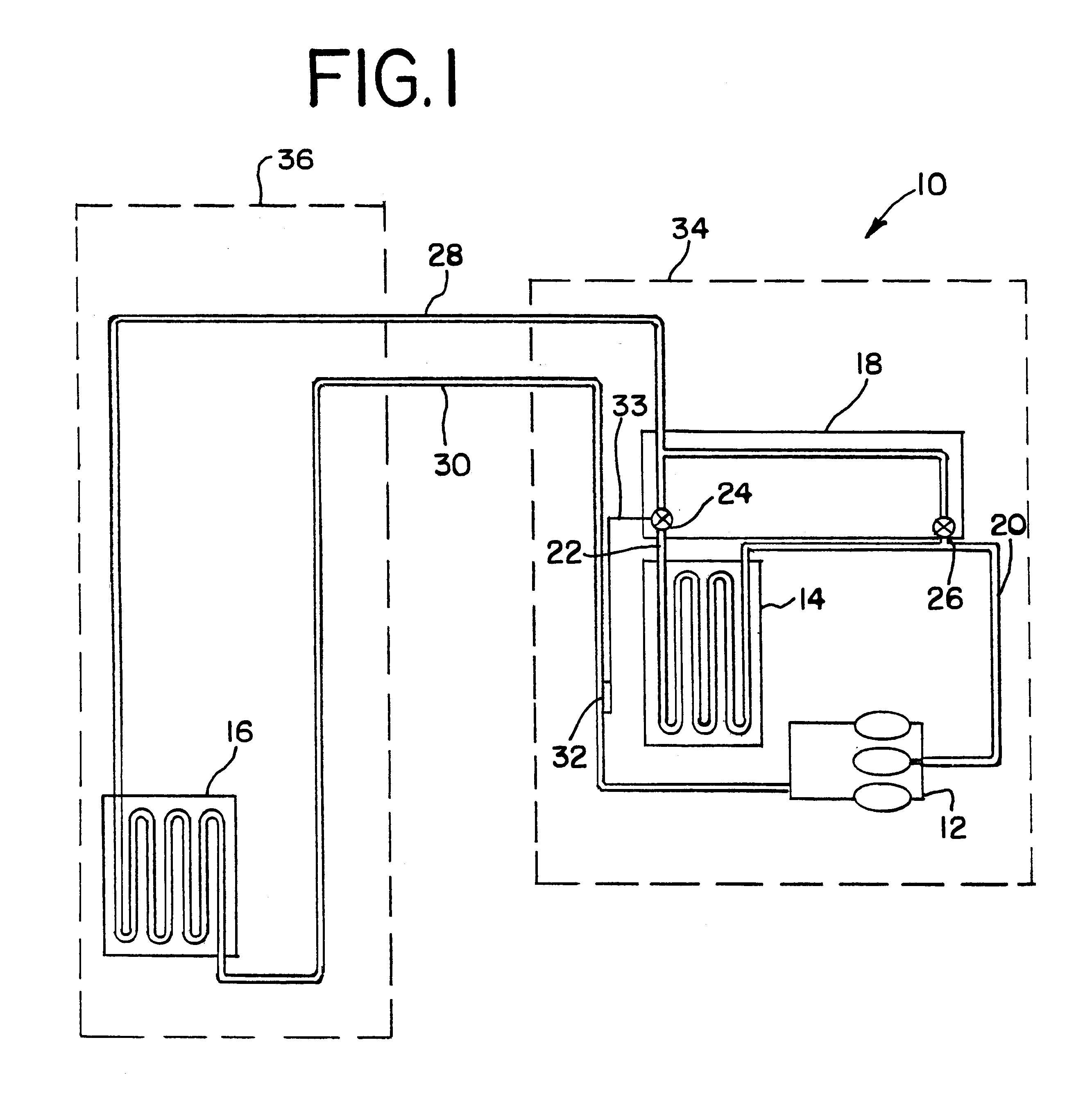Vapor compression system
a technology of vapor compression system and vapor vapor, which is applied in the direction of lighting and heating apparatus, process and machine control, instruments, etc., can solve the problems of reducing heat transfer efficiency, low quality liquid vapor mixture, and other complex methods, and achieve high operating efficiency and high efficiency operation.
- Summary
- Abstract
- Description
- Claims
- Application Information
AI Technical Summary
Benefits of technology
Problems solved by technology
Method used
Image
Examples
example ii
The Tyler Chest Freezer was configured as described above and further equipped with electric defrosting circuits. The low temperature operating test was carried out as described above and the time needed for the refrigeration unit to return to refrigeration operating temperature was measured. A separate test was then carried out using the electric defrosting circuit to defrost the evaporator. The time needed for the XDX system and an electric defrost system to complete defrost and to return to the 5.degree. F. (-15.degree. C.) operating set point appears in Table III below.
As shown above, the XDX system using forward-flow defrost through the multifunctional valve needs less time to completely defrost the evaporator, and substantially less time to return to refrigeration temperature.
PUM
 Login to View More
Login to View More Abstract
Description
Claims
Application Information
 Login to View More
Login to View More - R&D
- Intellectual Property
- Life Sciences
- Materials
- Tech Scout
- Unparalleled Data Quality
- Higher Quality Content
- 60% Fewer Hallucinations
Browse by: Latest US Patents, China's latest patents, Technical Efficacy Thesaurus, Application Domain, Technology Topic, Popular Technical Reports.
© 2025 PatSnap. All rights reserved.Legal|Privacy policy|Modern Slavery Act Transparency Statement|Sitemap|About US| Contact US: help@patsnap.com



